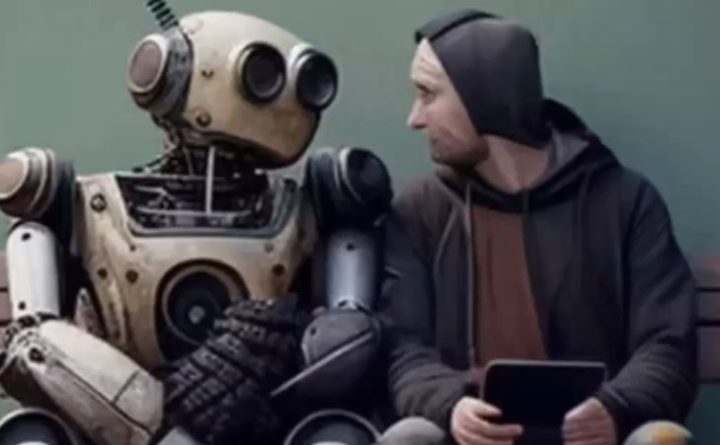In this post I share two videos on generative AI including (of course) reference to ChatPT. These are designed for a general audience at UCL and will hopefully be of relevance to academic and professional service colleagues as well as students. In these unscripted videos I, a human, talk in a non-technical way about some of the tools, their affordances and implications. The summaries below were generated in GPT4 using the transcripts of the videos.
Video 1:
In this video, Martin Compton from Arena discusses the phenomenon of generative AI, using Chat GPT as a prime example. He addresses the question of whether generative AI is a friend or foe, and suggests that how we react, utilise, and learn from these technologies will determine the outcome. He provides an example of a generative image created with AI, raising ethical concerns such as copyright infringement and the carbon footprint of AI technologies. He also talks about different manifestations of ‘large language models’ and raise questions about the ways members of the academic community could use them.
Access details and transcript for video 1 here
————————————
Video 2
In the second video about generative AI, Martin Compton from Arena builds on discussions with a colleague, Professor Susan Smith, and explores whether generative AI is a friend or enemy. He acknowledges the power and remarkable capabilities of AI tools like ChatGPT (a large language model text generator) and Midjourney, an AI image generator. However, he advises against panicking or feeling anxious about the impact of these technologies. Instead, Martin suggests that we should adapt, adjust, and learn from the ethical issues and implications these tools present. By finding ways to accommodate, embrace, and exploit the potential of generative AI, we can utilize these technologies for labor-saving purposes and ultimately enhance various aspects of our lives.
——————————–
Podcast
This post is reposted from Martin Compton’s blog.
